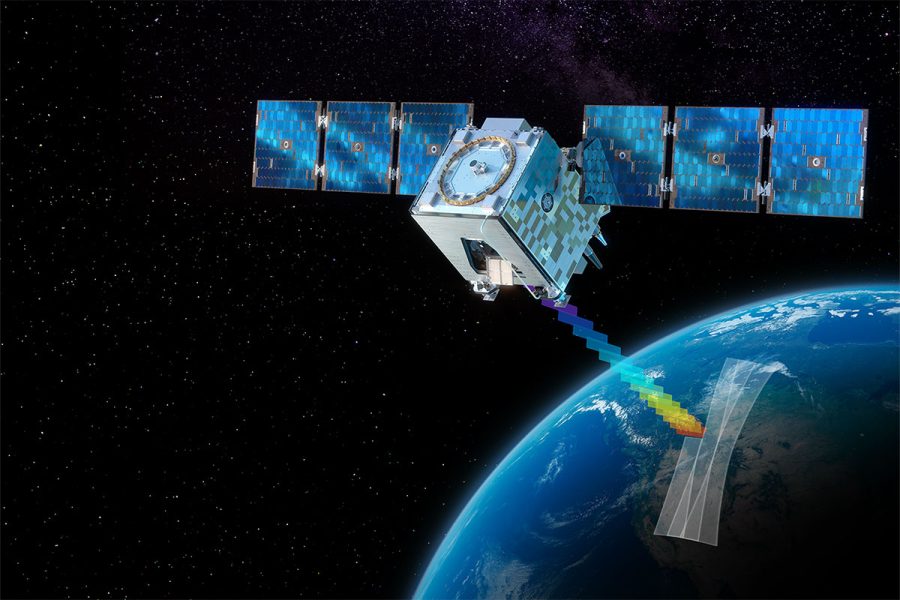In the race to out-innovate adversaries, the U.S. Space Force has one key advantage over its international rivals: a robust, dynamic commercial space industry. America’s booming private space industry provides launch, sensing, communications and other space-based capabilities to commercial customers—as well as the government—and many of those capabilities could have valuable military applications.
But as good as these commercial offerings are, they were not designed or intended to answer military requirements. Many military space functions are inherently governmental in nature. Missile warning, missile tracking, and missile defense, for example, as well as targeting targets on the ground, at sea, in the air or in space, are jobs we wouldn’t want to contract out. We want our government to provide for our collective defense, not hired hands.
To ensure American space superiority—that is, the ability to achieve desired effects in space when and where required, even in the face of adversaries’ countermeasures—the United States cannot expect to rely solely on commercial systems. The nation must pursue a balanced, hybrid approach that integrates commercial capabilities into a bespoke military space architecture.
Space Systems Command adopted this strategy a few years ago when Gen. Michael Guetlein, now the director of President Trump’s Golden Dome initiative, coined the motto “exploit what we have, buy what we can, and build only what we must.”
As the U.S. builds its future national security space architecture, leaders must assess when commercial solutions are sufficient and when assured government capabilities are necessary. Many motivations drive this approach—the need for assured government control, unique military considerations, and the availability, reliability and cost-effectiveness of commercial alternatives.
Assured control is important because commercial firms are not obligated to provide unprofitable services; they can choose to discontinue support, jeopardizing the customer’s ability to execute its mission. Russia’s threats against SpaceX for letting Ukraine use its communications services are well documented, as is SpaceX’s unwillingness to support certain Ukrainian military operations as a result.
Corporate motivations will not always align with national objectives. Leaders and shareholders may not tolerate risking billions in investments in space; they may balk at providing services under pressure from outside groups or even employees.
Some satellite services fall into a middle category, where commercial capabilities may be helpful and might complement military systems, but where military needs are unique and cannot be answered by commercial solutions alone. Weather satellites fit in this zone.
The Space Force is contemplating shutting down its aging Defense Meteorological Satellite Program, which provides weather data to military users worldwide. Without DMSP, the military will need new solutions, including current U.S. military programs like Electro-Optical Weather System (EWS) and Weather System Follow-On Microwave (WSF-M). These cannot be wholly replaced by commercial solutions, but military users can benefit from combining their data with commercial offerings—as long as the military can be assured secure access to those capabilities in time of conflict.
The final category of space systems are purely commercial technologies. Planet and Maxar, two commercial providers, deliver open-source imagery that enhances both global awareness and tactical decision-making. Vast is pioneering space stations that could provide options to the U.S. government after the International Space Station is decommissioned. Commercial launch providers continue to innovate, making access to space faster and more economical.
The Space Force’s Commercial Space Strategy recognizes this and seeks to leverage commercial capabilities wherever markets are mature, risk is manageable, and existing commercial solutions offer useful advantage.
The key is alignment: matching mission needs with a workable acquisition model. The distinction is not who builds it—industry builds nearly everything—but rather who owns, controls, and operates the system once it is fielded.
Threats to U.S. space systems are increasing. Jamming and spoofing are now common, and orbital aggression—threatening satellites in orbit—on the rise. Cyber-attacks on satellites and ground stations are also increasing. Against that threat picture, the Space Force will need both agility and assurance. The agility of commercial partners must be paired, therefore, with the assurance of sovereign capabilities. That means deeper collaboration: sharing threat intelligence, integrating requirements, and designing architectures that blend commercial speed with military staying power.
The Space Force’s challenge is to preserve full-spectrum military capability where required, while also incorporating commercial participation where possible. The United States does not need to choose between military capabilities and commercial innovation. But to have both, it must follow a hybrid approach to ensure America’s advantage in space remains—and more important, enhanced.


